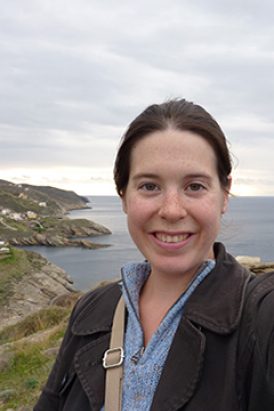Affiliation: University of Michigan

Natalie Abell is an Assistant Professor of Mediterranean Studies at the University of Michigan. She received her BA in Classics, Anthropology, and French from Indiana University in 2003, her MA in Classics from the University of Cincinnati in 2008, and her PhD, also from Cincinnati, in 2014. A specialist in the archaeology of the Aegean Bronze Age and the early Mediterranean, in particular the effects of trade as well as interactions between craftspeople in ancient societies, she wrote a dissertation on long-term patterns of exchange in the Bronze Age Cyclades, focusing on the settlement of Ayia Irini on Kea (ca. 2650-1400 BC). Her next project will examine, from a regional and comparative perspective, the development of market-based exchange systems in the Bronze Age Cyclades and their relation to social, religious, and cultural institutions. Dr. Abell was a Fulbright Fellow at the American School of Classical Studies at Athens and, most recently, a Visiting Scholar in the Department of Classics at the University of California, Berkeley. She has published articles on the mobility of craftspeople and on technologies and their transmission in the Middle and Late Bronze Age.
During the Aegean Bronze Age (ca. 3000-1100 BCE), there is abundant evidence for craft production that took place not in centralized administrative palaces but rather in workshops and houses that do not appear to have been under direct palatial oversight. This presentation examines how we can assess whether such production was “specialized” (i.e., targeted for exchange), and suggests that examining the networks that connected non-palatial producers and consumers offers valuable insights into how Aegean economy and society changed over time.
Recent studies of Middle Bronze Age (MBA, ca 1900-1700 BCE) pottery in the Cyclades have clarified changing production and import patterns. The MBA period is significant because it provides evidence for the intensification of production and exchange following a relatively long phase of demographic and economic decline in the later Early Bronze Age and earliest MBA. Pottery of the MBA also provides evidence for dramatic shifts in production and consumption during the earliest phase of the so-called Minoanization phenomenon, during which Cycladic communities adopted and adapted objects, practices, and symbols typical of Minoan Crete. Previous interpretations of Minoanization have focused primarily on the material manifestations of the phenomenon during the earlier LBA. Nevertheless, the development of new patterns of production and exchange over the course of the MBA likely played an important role in conditioning local Cycladic participation in the Minoanization phenomenon. This paper discusses these issues with respect to current work on ceramics, regional and long-distance exchange, and changes in craft technologies during the MBA at the site of Ayia Irini on Kea.
Recent research in the Bronze Age Cycladic archipelago has documented the widespread evidence for the distribution of imported products—especially ceramics—throughout the region. In addition, consensus has grown that human mobility was a key feature in driving technical and stylistic changes in Cycladic assemblages. Indeed, the operation of different sorts of mobility seems to be a key feature underlying major patterns of material culture change in the islands during the Middle and Late Bronze Age (ca 1900-1400 BCE). In this era, Cycladic islanders adopted and adapted material culture and practice from the palatial Minoan society of Crete. This presentation discusses different sorts of human and object mobility in the context of changing consumption and production patterns in the islands in order to provide new perspectives on how and why Cycladic societies changed during these centuries.